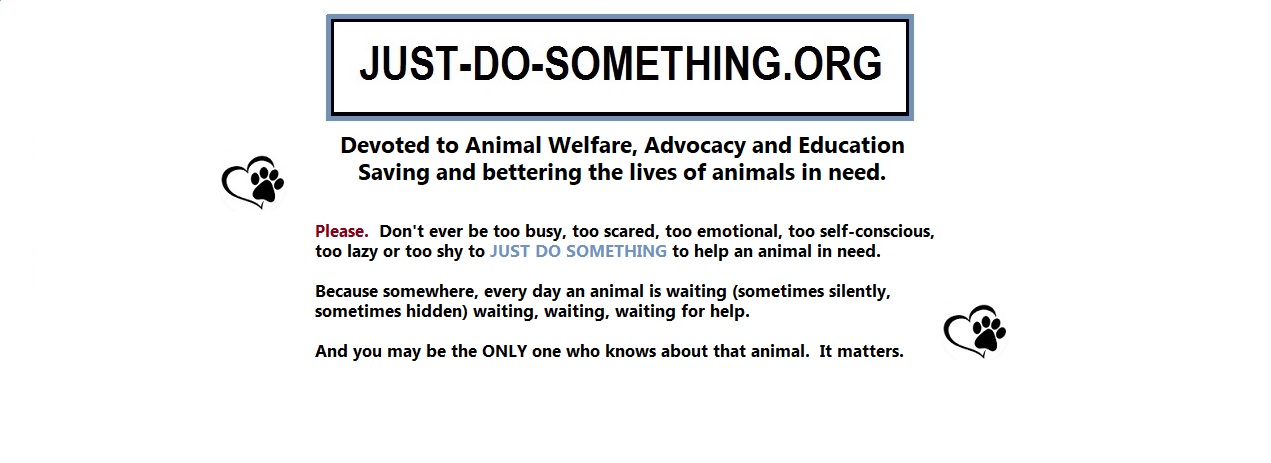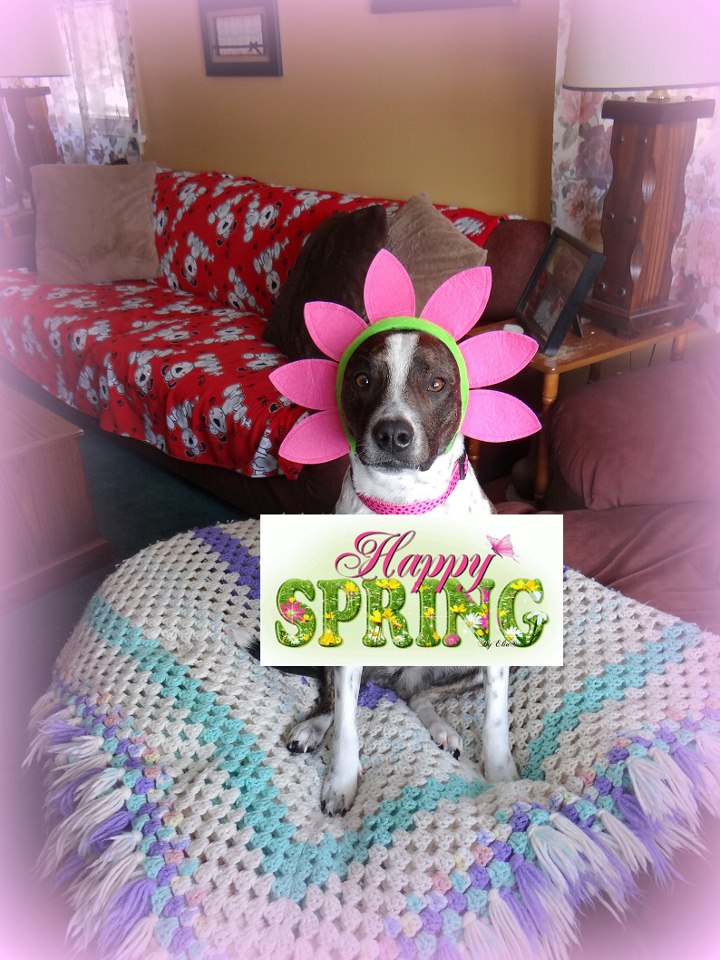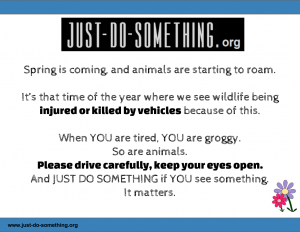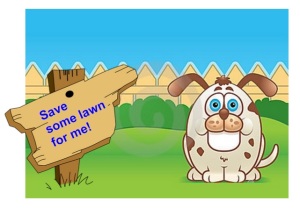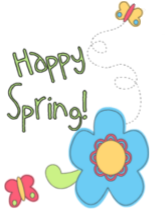Spring into Action!
Yep! This is our rescue gal, Jessie! She’s helping us spread Spring Joy this season (actually, she will do anything for a treat, including sitting still with a flower on her head).
Did you know?
- There are roughly 7 million stray dogs and cats in the U.S. at any given time.
- Many people will not take in a stray dog or cat, especially during mild weather, because they feel strays can fend for themselves if it’s nice out.
- There are many people who will not even call to report an injured animal in the mild weather for the same reason.
When talking about stray (homeless, ownerless) animals, the majority of people take this to mean dogs and cats. But common stray animals are not the only animals to be negatively impacted by their circumstance. ANY animal (including wild animals and birds) can have a difficult time, depending on their environment and their health.
Never turn your back on any animal in distress or in danger. The type of animal and the situation should always be taken into thoughtful consideration before you make the decision to aide that animal yourself. Even a stray dog or cat can be a possible risk to you if that animal is ill or becomes frightened when trying to approach it. Not sure? Call your local authority.
Animals are waking up and coming out of hibernation.
You know YOU feel when your alarm clock goes off? You stumble out of bed, half awake, and try to begin your day still foggy and sleepy. THAT’s how it is for many wild animals in Spring. Being aware of animals at ANY time of year is important – but like everything else, there are ebbs and flows to wildlife also. Spring is one of the times of year where we see more animals hit by cars than usual. Animals are waking up, roaming up, starting to forage for food and ready their homes for mating and breeding season. Their alarm clocks have gone off, and they are up and running.
It’s a good time of year to practice caution when driving, and ask others to do the same.
If you DO see an animal that has been hit be a car, PLEASE STOP.
Here are some things you can do to help.
Spring weather can still be cold.
The days may be longer, the sun may shine a little more, the snow is melting and buds are appearing all over the place. But that doesn’t mean that the ground is thawed, the mud has dried and the nights are warmer. At this time of year, the ground is still very cold even though we are starting to see the grass, and that includes mud that warms up during the day, but re-freezes at night. And remember, we still can get snow in the Spring!
- Even well meaning pet owners may not realize they should not simply put their animal outside for prolonged periods of time during Spring (especially in the early mornings and night time). This is especially true for new pet owners who may not yet be well educated on environmental pet care and for elderly pet owners who may forget from time to time the importance of routinely checking on their pets once they are outside.
- Take the time to speak up if you see a domestic animal staying outside for too long.
It matters to that animal. - Domestic pets that are in-door animals, should be limited in the amount of time spent outside in the cold and damp.
- If it’s still cold enough for you to wear a jacket, then chances are your pet needs one also.
- Humans have boots; animals have paws. Although the bottom of your pet’s paws may feel rough, they are sensitive to hot and cold. Cold can burn, ice can tear and scrape, snow can numb, salt and residual ice-melting chemicals can do damage (and make you pet sick if s/he licks their paws after they come indoors) and frostbite is still possible in the early Spring. Most domestic animals dislike “booties”, so simply pay attention to the amount of time your pet is walking on the snow, ice and cold pavement, and take the time to gently wipe off cold and wet paws after being outdoors.
- Is it a cold, wet day? Any soft, clean absorbent towel is great for drying off your pet after outdoor time. A cold wet pet is a miserable, shivering pet. Be sure to routinely wash any toweling used to dry your pet.
PESTICIDE SEASON starts in Spring, and for many, continues on until late Fall. Before you make the decision to treat with pesticides, think about your pets, wildlife (babies in the Spring and Fall), and our environment. If you do decide to treat YOUR lawn, be conscious of where your pets routinely go outside, and the little critters that you know roam on your property. Let your lawn guys know you have a pet that goes outside, and if you know of certain areas that critters enjoy, mention that, also. Ask them to leave an area untreated so your pet and other critters can enjoy your yard without easily coming into contact with lawn treatments, which can cause internal and external issues just by licking or touching pesticides.
- Before treating your lawn, before they arrive, remove water sources and ground feeding stations. Pesticide poisoning HURTS.
- Try to keep your pet off treated lawns for the first 24-hours.
- Do not put out any food or water to entice other critters to your yard for 24-hours.
- Have an “out” plan in place if you treat your entire lawn, so your pet can still get out for exercise and relief.
- Be aware of neighbors who treat their lawns – stay away!
- Wipe off paws any time your pet walks on treated ground.
- Never let your pet lie or roll on treated ground.
- As a courtesy to other pet owners, leave your lawn treatment signs up at least two days to make others aware.
Spring springs activity in animals!
Spring is the time when mating rituals begin, many animals give birth, and wild animals wake up from hibernation to roam about looking for food and new homes for their young. There is A LOT of animal activity in the spring.
Wild Animals
- More wild animals will be killed or injured by cars as they become more mobile. Warmer weather means more animals roaming about. This is a good time to talk about what to do if you see ANY injured animal.
- Again, click HERE for helpful information on what you can do.
- Come across any baby birds or animals? Leave them alone unless it’s clear they are abandoned or in distress. Not sure? Call your local rescue or wildlife rehabilitators to find out what you may need to do.
- If you have a dog that loves to chase, make sure wild animals (think squirrels, raccoons, rabbits, and their babies) are protected as best as you can, before you let your dog out.
Outdoor Dogs
- Yard debris covered up by snow should be cleared up to prevent animals and domestic pets from stepping on potential objects that can inflict injury by stepping on them or eating them. This includes picking up animal droppings that have accumulated in the yard over the winter.
- Some dog owners do not use flea medicine in the winter. If you are one of those dog owners, it’s time to start!
- If your dog is an outside dog, clean out the doghouse, wash the bedding, clean up the area around the doghouse, and clean out the water bowl. Routinely check doghouses and bedding for spiders and other bugs that love to nest inside them.
Birds
- If you clean out your birdhouses or nest boxes and leave them open in the Fall, now is the time to close them back up so birds can begin to nest.
- If you wean off from feeding the birds from the winter, do it gradually. It’s still difficult to find food in the Spring, especially for the birds who have gotten used to eating from your feeding stations all winter. The warmer is gets, the less seed you can put out.
- Clean up your feeding stations and feeders so they are ready for next year. Uneaten, left out seed and food items from the winter will spoil and mold in the warmer weather.
- Clean out bird baths that have stayed out over the winter. Always offer fresh, clean water.
- Do you like to feed the ducks? A bag of corn works better than bread.
And remember, for the SPRING, or ANY time of year:
- Always SPEAK UP.
- Keep your eyes and ears open. If you become aware of a situation where ANY animal is in distress or danger, DO SOMETHING about it.
- Call local authorities and WAIT until someone comes to the animal’s aide.
- You may be the ONLY witness and/or the ONLY one to help that animal in that situation.
- Don’t be nervous or worried if you have to report an act of animal abuse or neglect.
YOU are their voice. - If you are not sure about what you think you see, call for help anyway. You might be saving a life.
- Provide shelter.
- If bringing the animal inside your home is not an option, help him/her survive the damp and cold Spring weather by providing shelter such as a sturdy cardboard box lined with a good amount of clean, dry straw (straw is the main insulator that rescuers use when helping out strays or domestic outdoor animals who stay outside).
- Straw provides a soft but effective barrier against the cold and damp, keeps warmth in (if you pile it in a good amount), is pliable enough so animals can burrough and surround themselves with it, and does not mold quickly.
- Don’t bother with towels and blankets as these will get wet in a storm and stay damp.
- Enticing the animal into your garage will also work.
- Ensure proper bedding for warmth and comfort, as garages usually are not heated.
- Make sure that harmful products normally stored in the garage are completely out of the way.
- Cars should never be running in the garage at any time if there is an animal in there!
- If bringing the animal inside your home is not an option, help him/her survive the damp and cold Spring weather by providing shelter such as a sturdy cardboard box lined with a good amount of clean, dry straw (straw is the main insulator that rescuers use when helping out strays or domestic outdoor animals who stay outside).
- Are you already providing shelter to a stray?
- Time to change the straw or bedding!
- Just like a human, animals can develop sores and sensitive skins from dirty, unwashed bedding.
- Replace straw and/or wash bedding!
- A stray’s life can be pretty miserable. Don’t add to it by overlooking this simple necessity.
- Provide food and water.
- Did you know that many pet owners think that melted snow is a great substitute for water? Not true! Melted snow is left-over snow, which is dirty and unclean for a number of reasons.
- Always ensure that there is a daily supply of fresh, clean water easily available.
- Providing stray animals with fresh, clean food and water can help them survive better because they will need to use less energy to scrounge up their dinner.
- A well-fed, well hydrated animal is also better prepared to fight off illness and infection.
- Steer clear of canned food as it is more likely to freeze when the temperatures drop and spoil when the temperature warms.
Remember, if you do take in a stray animal:
- Make sure your first stop is with a licensed veterinarian who can assess the animal for diseases and make sure that it is immunized and safe to be around your children or other pets.
- If you don’t want to bring the stray to a shelter, reach out to your local rescue groups to see if someone can take him/her.
What are your Spring tips? Share it with us, and we’ll pass it around! All efforts matter for ANY time of year, when it comes to helping out our animals.
